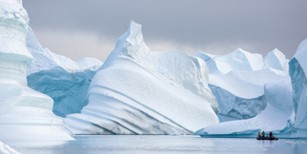Unit 3: Citizen Science and Water Monitoring
Introduction

Through this unit you will learn about citizen science and its potential to contribute to large-scale scientific monitoring and research and to engage the general public with science. As part of this process you gather data on a local freshwater body and upload it to a central database for further analysis.
Activity 3.1
Learn about Citizen Science and how it may be used to support the United Nations’ sustainable development goals pertaining to water by engaging with slides 4 – 13 of Unit 3 Presentation.
Take this online quiz to assess your knowledge of Citizen Science.
Activity 3.2
Learn about the Freshwater Watch project, developed by Earthwatch Europe and the Dublin City University Water Institute’s BACKDROP project by exploring their websites:
Activity 3.3
Prepare for gathering data on a local freshwater body:
- Create an earthwatch community account.
Fill in the requested information on this web form. A confirmation email will be sent to your email account. Complete the registration process by clicking on the link in the email and filling in the requested information. This will bring you to the members area of the Freshwater Watch Europe website. - Search for a local Freshwater Watch group, sign up to the group and contact them to request a water testing kit (note you could set up your own Freshwater group instead).
- Follow the tutorials on your Freshwater Watch group page to learn how to use the water testing kit, to install the ArcGIS Survey123 app and to download the event survey to the ArcGIS Survey123 app.
- Learn how to work safely when collecting water samples by discussing slides 19 -21 of Unit 3 – presentation.
Take this online quiz to assess your preparedness for gathering data on you local freshwater body.
Activity 3.4
Learn about the impact of FreshWater Watch projects in Ireland by engaging with slides 23 – 24 of Unit 3 Presentation.
Have similar Freshwater Watch projects been run close to you? Log into your Freshwater Watch account and use the search box to find projects local to you. Examine the results of the data collected and discuss what this means for the health of your local freshwater environments.
Learn about the types of data collected during a Freshwater Watch event by discussing slides 27 – 34 of Unit 3 Presentation.
Take this online quiz to assess your knowledge of FreshWater Watch events and their impact.
Activity 3.5
Collect data on your local freshwater body using the ArcGIS Survey 123 app and upload your findings for further analysis.
Check back on your Freshwater Watch group page in the weeks afterwards to see the results of your group’s work. What do the results tell you about the health of your local freshwater body? Based on these results, is action required to improve the health of your local freshwater body? What could you do?
Activity 3.6
Think about and discuss what other opportunities exist to use Citizen Science to engage learners with STEM. Share your thoughts using Google Jamboard.
Activity 3.7
At the beginning of Unit 1, you created a mind map to summarise all you know about water. Investigate how, compared to mind maps, concept maps are more powerful tools for developing understanding
Learn how to construct a concept map using the resources available on the Cmap website.
Use Cmap to create a concept map which summarises your learning in relation to:
- Water Sustainability and Awareness
- Water Data
- Water Monitoring and Citizen Science
Activity 3.8
Reflect on your learning throughout Unit 3, by downloading and completing this learning log. Share your reflections with your tutor.
